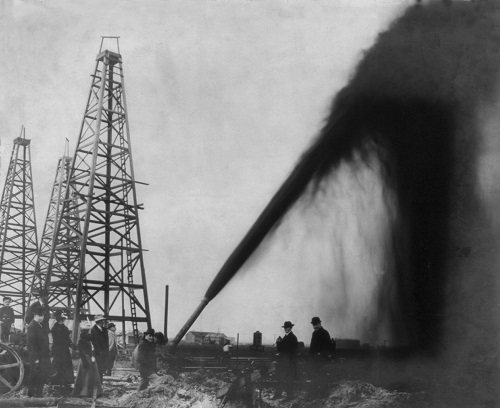Esta información también está disponible en español.
Introduction

The first workers' compensation laws were enacted in Texas in 1913 and held fast to the principle that employers should be allowed to choose whether to offer workers' compensation benefits to their employees. At the time, the courts generally held that mandatory, government-administered workers' compensation programs denied the property rights of employers without due process of law.
The judicial climate changed in 1917 when the U.S. Supreme Court ruled that it was lawful to require employers to choose whether or not to participate in a state's workers' compensation program. Texas revised its workers' compensation laws in 1917, but retained voluntary employer participation in the system.
Today, Texas is the only state that allows employers to choose whether or not to provide workers' compensation, although public employers and employers that enter into a building or construction contract with a governmental entity must provide workers' compensation.
The 1917 Texas law created the Texas Industrial Accident Board to administer workers' compensation laws in the state and provided the basic framework for the state's workers' compensation system until the late 1980s.
Texas Workers' Compensation Act
In 1987, amid growing public complaints about high insurance costs for employers and low benefit rates for injured workers, the Texas Legislature appointed a Joint Select Committee on Workers' Compensation Insurance to make recommendations for change.
The Joint Select Committee study concluded that work-related fatalities and injuries in Texas seemed to be higher than the rest of the nation. Also, the committee found that benefit rates and payment durations were low compared to other states, especially for seriously injured workers. Other key findings included that medical costs were on the rise and that attorneys were extensively involved in lost time claims by injured workers, even when the claims went undisputed.
Addressing these concerns, the Texas Legislature adopted the Texas Worker's Compensation Act (Senate Bill 1) on Dec. 13, 1989. The Act was immediately challenged in court but it was upheld eventually by the Texas Supreme Court.
The Workers' Compensation Act ensures that injured workers are compensated fairly and appropriately for workplace injuries. Under the Act, Texas remains the only state that still allows private employers to choose whether or not to maintain workers' compensation insurance. Employers who choose not to maintain coverage must notify the Division and their employees that they do not intend to maintain workers' compensation insurance. The Act created more insurance options for employers, including self-insurance for large employers who meet established criteria and are certified by the Division.

The Texas Workers' Compensation Commission (TWCC) was created under the Act to administer the workers' compensation system, replacing the Texas Industrial Accident Board. TWCC administered the system until 2005, when it was abolished and replaced by the Texas Department of Insurance, Division of Workers' Compensation (Division).
The 1989 Workers' Compensation Act established a new benefits system, raised basic benefit levels and set tight deadlines for employers and carriers to improve benefit delivery. An administrative dispute resolution process under the Act attempted to resolve claim disputes informally whenever possible. It provides for an internal administrative process that includes hearings and reviews by a three-judge appeals panel to settle disputes that cannot be resolved informally.
To confront concerns about high costs and the involvement of attorneys in even routine claims, the Act called for the development of medical fee and treatment guidelines to control medical costs and limits attorneys fees to time and actual expenses, up to a maximum of 25 percent of an injured worker's total recovery.
The Act strengthened the Division's ability to monitor system participants and to assess administrative penalties for noncompliance with the Act or Division rules. It provided that the Division may also investigate fraud and may work with local prosecutors and law enforcement officials to prosecute workers' compensation fraud.
Finally, the Act consolidated and expanded state-administered workplace health and safety programs and the created workplace health and safety assistance and incentive programs for employers.
Major reforms in 2005 and House Bill 7
During the 1990s, numerous measures were passed by the Legislature to make the workers' compensation system run more efficiently. A growing concern toward the end of the decade was high medical costs in the system. The length of time that injured workers stayed off the job was scrutinized as well, with several studies emerging comparing Texas unfavorably to other states for return to work outcomes.
In 2004, two interim committees of the Texas Legislature were charged by state leaders to study the workers' compensation system. The Senate Select Interim Committee on Workers' Compensation was directed to examine the benefits of existing, regional health care networks to treat injured workers and to assess the potential impact of full-scale networks in the system. The committee also was directed to examine measures undertaken and proposed to regulate medical costs for treating worker injuries.

The Senate Select Interim Committee concluded that health care networks should become part of the workers' compensation system and that treatment guidelines should be developed to direct the types of care given to injured workers.
The House Business and Industry Committee prepared an interim study on the workers' compensation system that also endorsed health care networks to treat injured workers.
In addition to the legislative interim studies, the former TWCC underwent review by the Texas Sunset Advisory Commission in 2004. The Sunset Commission recommended the abolition of TWCC , the addition of health care networks for injured workers, and the creation of an Office of Injured Employee Counsel (OIEC). Numerous other recommendations included improvement of return-to-work outcomes and measures to control medical costs.
The Texas Legislature enacted House Bill 7 in 2005 to reform the administration of the workers' compensation system and implement major changes in the delivery of benefits to injured workers. H.B. 7 provided that the newly-created Division of Workers' Compensation in the Texas Department of Insurance would be overseen by a Commissioner of Workers' Compensation appointed by the Governor. This represented a significant change in the stewardship of the workers' compensation system from the former Worker's Compensation Commission composed of six members representing employers and employees.
H.B. 7 also established a new state agency, the Office of Injured Employee Counsel (OIEC), to be administered by a Public Counsel appointed by the Governor. The Public Counsel represents injured workers in rulemaking proceedings and coordinates ombudsman assistance for injured workers in administrative dispute proceedings.
Health care networks, similar to those found in group health insurance, first came to the Texas workers' compensation system under H.B. 7. As the networks were being developed to begin operations in 2006, the Commissioner of Workers' Compensation also directed the implementation of many other reforms approved by the legislature in H.B. 7. A summary of H.B. 7 and other workers' compensation legislation is available.
